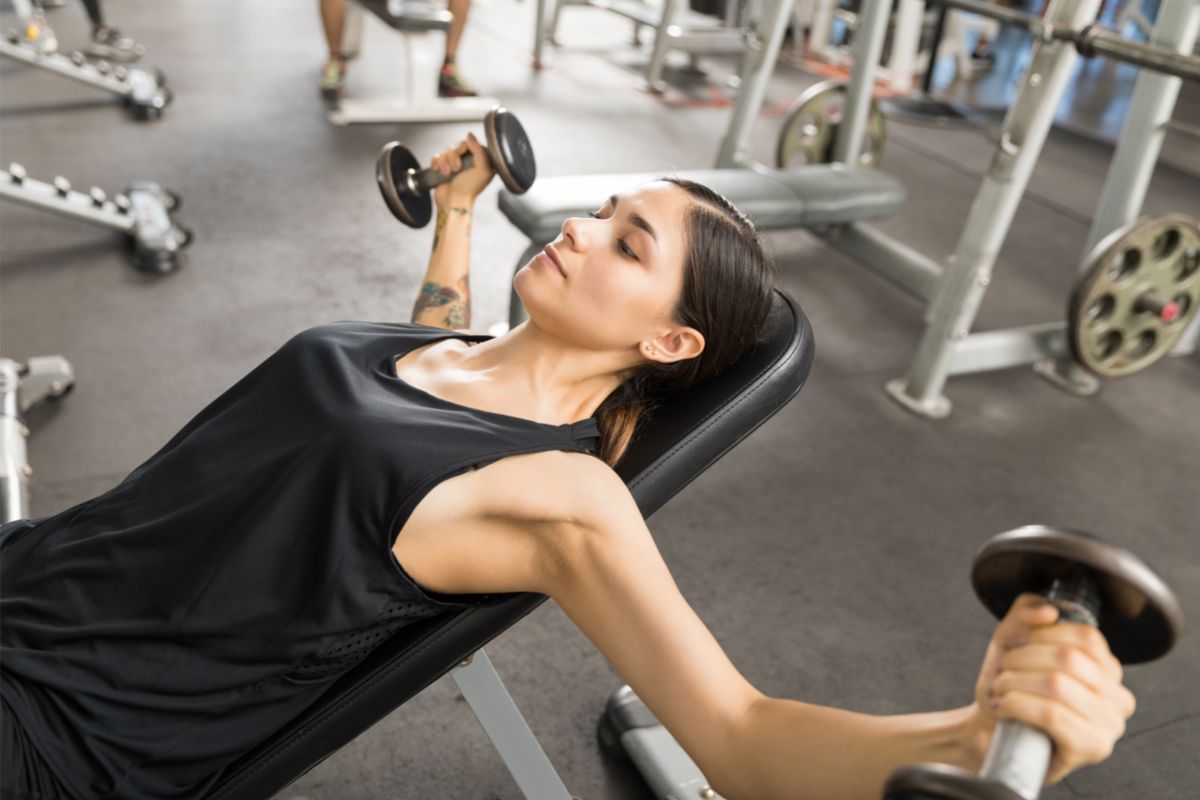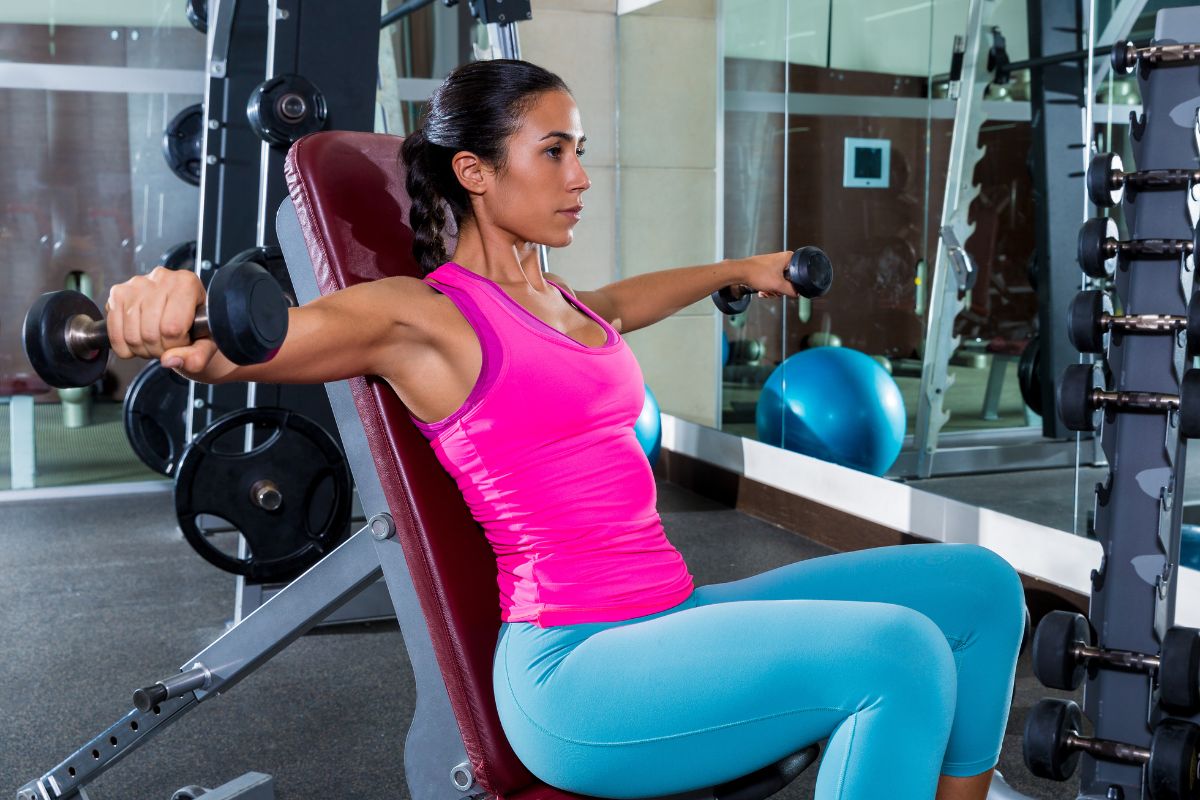Last Updated on December 3, 2022 by admin
Keeping your body strong is vital for overall good health and that includes the muscles in the shoulders.
The dumbbell shoulder fly is one of the most effective ways to work your shoulders. This exercise targets the deltoids, the muscles that form the rounded contours of your shoulder.
These muscles include the teres minor, infraspinatus, supraspinatus, and subscapularis. By targeting these muscles you increase overall arm strength and endurance.
Although the dumbbell fly mainly works your shoulder muscles, it also strengthens the muscles in your forearms and back. The best way to perform the movement is with dumbbells.
You can do dumbbell shoulder flies using a variety of different weights. When performing the exercise, choose a weight that allows you to complete 10 repetitions without feeling fatigued. If you feel like you’re struggling to complete 10 reps, reduce the weight.
Strengthens The Scapula
The scapula is the largest bone in the human body. It helps support the upper arm and provides stability to the neck. When it moves forward, the shoulders roll down and away from the ears.
This movement creates tension in the muscles of the front side of the shoulder area. If the muscle groups are tight, the scapula is pulled toward the spine. As a result, the head tilts backward and the neck becomes stiff.
The dumbbell shoulder fly exercises really help with strengthening the muscles around this bone.
Lateral Fly
The dumbbell lateral fly is one of the most effective exercises for building the center part of the lateral deltoid muscle. This exercise targets the middle head of the muscle and works it harder than the lateral head.
To do the dumbbell lateral fly correctly, you’ll want to start with a set of 10 repetitions. As you progress, increase the number of reps to 20 and eventually 30. You can perform this exercise while seated, standing, or lying down.
Muscles
The lateral deltoid muscle is one of the most important muscles in the body. This muscle helps us lift our arms up overhead and push our hands forward.
When we do exercises like bicep curls, triceps extensions, bench presses, pullups, chin-ups, dips, rows, squats, lunges, etc., it is the lateral deltoid that works hard lifting those heavy weights.
The anterior deltoid is located on the side of the shoulder blade. It helps rotate the arm outward and upward. If you watch someone doing a shrug, you can see how much work this muscle does.
The trapezius is another large muscle that runs down the middle of the back. It helps stabilize the spine and keep the head upright.
When performing a lateral raise, the primary muscle used is the lateral deltoids. As the weight gets heavier, the secondary muscles are also used.
Standing Rear Delt Fly
This Dumbbell Rear Delt Fly is an effective exercise to strengthen your shoulder muscles, including the rear deltoids. This exercise targets the back delts, which are commonly overlooked by many weightlifters.
In addition, strengthening the back delts by utilizing this exercise can result in better posture, and better strength overall.
Muscles
The primary muscles used during this exercise are the posterior deltoids, lateral deltoids, trapezius, infraspinati, teres minor, and teres major. As we’ve seen these muscles work together to lift the arm up and down.
When performing this movement, it is important to keep the elbow joints locked throughout the entire range of motion. This prevents the shoulder joint from moving forward and backward.
Suggestions
The biceps are one of the most neglected muscle groups in the gym. They often go overlooked because people focus too much on the chest and triceps.
However, it’s important to work out the biceps just like you do the rest of the muscles in your upper arm.
In fact, the biceps play a major role in helping you perform everyday tasks such as lifting heavy objects, opening jars, and even playing sports.

Sideways Delt Fly
This deltoid fly exercise targets the posterior deltoids, lateral deltoids, infraspinatus, teres minor, rhomboid muscles, middle trapezius, lower trapezius, and serratus anterior.
This exercise is ideal for building strength especially because it works the less used and often neglected muscles. If you are unable to perform this exercise due to injury, try performing the side-lying reverse dumb bell fly instead.
Suggestions
The dumbbell curl is one of the best exercises you can do for your core. But it’s easy to make mistakes while performing the exercise. Here are some tips to help you avoid common errors.
- Don’t let the dumbbell touch the ground. If you do, you’ll lose momentum and won’t be able to complete the full range of motion.
- Brace your abs. When you’re curling the weight up, keep your abs tight against your spine. This helps prevent you from rounding your lower back.
- Let your arms move freely. You want to feel like you’re doing a free weight lift, not a bicep curl. Your arms shouldn’t be locked out at the top of the lift.
- Avoid arching your back. Instead, focus on keeping your chest lifted high.
- Breathe deeply throughout the entire set. As you inhale, pull your stomach muscles inward toward your spine. Exhaling, push your belly button outward.
- Complete three sets of 10 reps each. Start with lighter weights and work your way up over time.
Reverse Dumbell, Head Supported
This reverse dumb bell fly is a good exercise because it targets both sides of your upper body simultaneously. This exercise works out your entire upper body without having to do multiple sets.
If you are looking to build muscle mass in your chest, shoulders, triceps, biceps, and forearms, It’s recommended doing four sets of 10 reps each side.
In order to focus on posterior deltoid muscles during the head-supported reverse dumbbell fly, keep the bar close to your ears and keep your torso horizontal.
You want to make sure that you don’t lean forward too much, otherwise you’ll put most of your focus on your anterior deltoids.
Muscles
The primary muscle responsible for shoulder abduction is the posterior deltoid. The secondary muscles are those that assist the posterior deltoid during shoulder abduction.
These include the lateral deltoid, the trapezius, the rhomboids, the infraspinatus and the teres minor.
Tips
To get the best out of these exercises you should lift three times per week. Three workouts per week is ideal, though some people find four workouts better. Make sure you rest at least 24 hours between sessions.
In addition to the above it’s also important that you don’t go too lightly. When you start out, you’ll likely be able to handle heavier weights but starting off with lower weights helps prevent injury.
And remember, you can always increase the amount of weight you lift over time.
It’s best to do each exercise for 10 repetitions. Each repetition is defined as performing the movement once. So, if you perform a bicep curl for 12 reps, you’ve done 12 curls.
Perform each set to failure. Failure occurs when you cannot complete another repetition without stopping. Once you reach failure, stop immediately. Don’t keep trying to push yourself. Furthermore, be sure to use proper form.
Your goal isn’t to look like Arnold Schwarzenegger, (or maybe it is) but rather to work your entire body.
To ensure proper form, focus on keeping your spine straight and your shoulders down. Lift your chest up toward the ceiling during the concentric phase of the movement.
Be sure to keep your core engaged. By engaging your abs, you help stabilize your torso and protect against injuries.
It’s also important that you rest properly. After every workout, take five minutes to stretch. Stretch both the large and small muscles in your body. This will help prevent potential injury.
Conclusion
Dumbbell shoulder fly exercises are an excellent way to strengthen your upper body. They’re also great for building strength and endurance.

